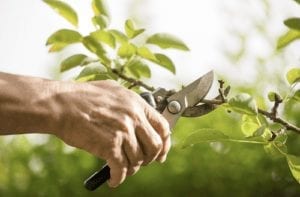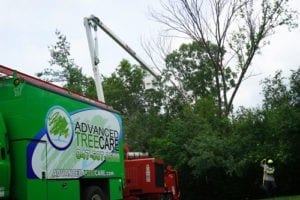Your lawn is central to true curb appeal. A properly maintained lawn helps you feel good about your home—and can also boost its value, practically overnight. This is true whether you’ve just moved into a new home, are preparing to put yours on the market this fall, or simply are hoping to give the old homestead a facelift.
But where to start? July and August are hot, and by this point in the season, the lawn might be looking like it’s seen better days. What’s the priority, and what should you do for late summer and early fall lawn care?

Mow—but not too short
Remember Goldilocks and the three bears? Goldilocks didn’t like her porridge too hot or too cold—but just right. The same is true for your lawn. A healthy, thick lawn is a thriving lawn with no space for the weeds to take off. To cultivate a healthy, lush lawn, don’t cut your grass too short when you mow. If you do, the grass blades can’t shelter the roots from the sun, and the grass can go into shock. Weeds start to take over. Aim to keep your mower blade 2 ½ inches from the roots, and never cut more than 1/3 of the grass blade. And, be sure that you’re always mowing with very sharp mower blades. Dull blades tear rather than cut the grass blades. (Pro tip: you’ll see white tips if your blades are torn rather than cut.)
Water—but not too much or too often
Water and sun drive the plant growth cycle. Grass that is overwatered gets overly dependent on receiving water from a hose or sprinkler system. It doesn’t develop a deep and healthy root system, which can protect it in times of heat or drought. Resist the temptation to overwater your lawn, and accept that at this time in the year, everyone’s grass is looking a little brown. When cared for properly, yours will be lush in the right part of the season.
Fertilize properly, whatever you choose
The proper time to apply fertilizer is early in the season when your lawn is growing rapidly. If your lawn needs a quick pick-me-up even at this point in the season, you can consider the application of an organic fertilizer, which is fast-acting and produces noticeable results. A longer-lasting option is organic garden manure. Less costly, organic garden manure can be far more labor-intensive to apply, and you’ll have to apply more per square foot than you would with fertilizer. However, organic garden manure does last considerably longer in the soil—and it’s better for the health of the soil (and your grass).
Be patient and vigilant with weeds
If you’re moving into a new home, and your lawn needs some TLC because it’s choked with weeds, your most important tool is your patience. Start by weeding, even if doing so requires you to break up the job into small chunks. Follow the advice above for fertilizing, proper mowing, and optimal watering. It may take more than a season or two, but eventually you’ll have the lawn of your dreams—and the lawn that is the envy of every other resident on your block.
It’s true that we specialize in tree care. Our philosophy, though, is that trees are only one part of your property’s ecosystem. Trees thrive best in a healthy, disease-free lawn. It’s all connected: when your lawn isn’t overly dependent on watering, it helps hold moisture in your soil, which also benefits your trees.
Advanced Tree Care combines top-notch equipment, cutting-edge technology, and well-trained staff to provide emergency tree removal and tree maintenance services. With a presence in nine counties and two states, we work daily to provide unparalleled customer service, safety, and efficiency—as well as the expertise to beautify your landscaping and community. Advanced Tree Care isn’t just our name—it’s also our purpose!




